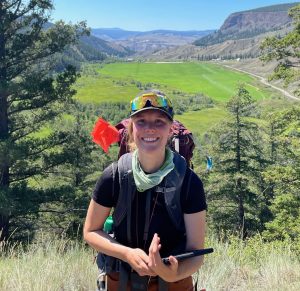How much fuel would need to be removed to reduce crown fire risk?
Interested to learn more about this project?
Watch Georgina Preston’s presentation
Colonial Land Management Systems are Barriers to First Nation Community Wildfire Mitigation in Interior British Columbia
Wednesday, November 2, 2022 – 3:10pm – Devonian Room

Abstract:
The wildfire seasons of 2017, 2018 and 2021 forced the evacuations of many small remote communities in British Columbia. Many such communities face wildfire risk but experience barriers in making local forest stewardship decisions that would allow them to mitigate that risk. First Nations communities are disproportionately affected by wildfire risk. Despite having Aboriginal Title and Rights throughout their Traditional Territories, First Nations often face unique barriers in implementing stewardship decisions due to colonial land management systems. Legally entrenched provincial conservation policies, including those for old growth management areas and mule deer winter range, were implemented to protect important forest habitat areas. However, forest management in these areas is regulated in such a way that communities often face significant barriers in reducing wildfire fuels and community wildfire risk. The University of British Columbia partnered with Stswecem’c Xget’tem First Nation (SXFN) to evaluate community wildfire risk and crown fire probability given contemporary fuel loads and potential mitigation treatments. We collected fuels data from 42 plots in the wildland-urban interface of SXFN’s populated reserves (2km radius) and modelled fire behaviour using the Crown Fire Initiation and Spread model. To understand potential mitigation treatment benefits, we modelled two fuels reduction treatments: a first scenario following management standards in colonially managed areas, and a second that removed fuels until crown fire risk dropped significantly at each plot. All treatment types are modelled under 50th, 70th, and 90th fire weather conditions. We identified significant crown fire risk around SXFN communities, especially under 90th percentile fire weather conditions. As the colonial conservation areas restrict fuels reductions at most plot locations, we predict that the second treatment scenario will be more successful at reducing crown fire likelihood. Many rural communities in British Columbia’s dry interior have colonial conservation policy lands in their wildland-urban interface and face similar challenges in protecting themselves from community-threatening wildfire.